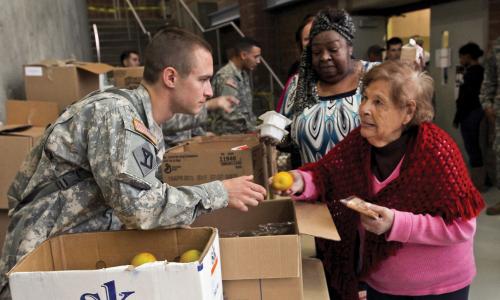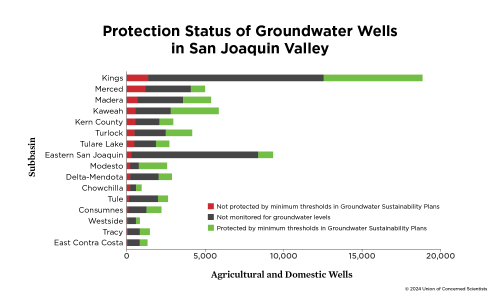The sprawling city of Gulfport is located in Harrison County, MS, along the Gulf of Mexico. With scenic beaches, resorts, casinos, and golf courses, the area is a hub of tourism.
Hurricanes, storm surge, and inland flooding have long plagued the Mississippi shoreline, but the devastation of Hurricanes Katrina and Rita in 2005 caused unprecedented, long-lasting damage, and uneven recovery. Between 1985 and 2014, Harrison County suffered nearly $6 billion in property and crop damages from coastal storms, hurricanes, and flooding (in 2014 dollars). And with rising sea levels, the risks of coastal flooding and storm surge are worsening.
Other local factors, including land subsidence along the Gulf Coast combined with accelerating sea level rise due to climate change, will lead to a projected increase in local sea level of an additional 19 inches by 2050. Simultaneously, the rapid loss of coastal wetlands to growing development is reducing natural protections against flooding and worsening its impacts.
Hurricane Katrina devastated portions of the Mississippi coast with storm surge flooding of 25 to 28 feet above normal tide level and with flood waters reaching more than six miles inland. In the aftermath of the hurricane, disaster aid was slower to arrive in communities of color, such as North Gulfport and Turkey Creek, exacerbating existing stresses on these neighborhoods. Affordable housing units in Harrison County, in short supply prior to the storm, declined by 25 percent due to Katrina. Higher rents for the remaining units and a greater emphasis on repairing single-family owner-occupied homes relative to multi-family rental units further reduced the affordable housing stock.
Explaining the situation in a 2007 interview, Melinda Harthcock of the Steps Coalition said, “We had an affordable housing crisis before the storm. Developers were filling in wetlands . . . but few noticed the danger. Katrina dramatically accelerated everything.” Kathy Egland of Gulfport, chair of the NAACP Environmental and Climate Justice Committee, warns that “people need to understand that when, not if, the next storm comes it will be even worse. Now when we have hard rain, we have flooding we hadn’t experienced before.”
Impacts on the Turkey Creek community
Settlement patterns in the Gulfport area reflect the area’s long history. In 1866, Black freedmen and -women settled there in swampland areas, such as Turkey Creek and North Gulfport, and were banned from beaches and areas along the coast where the white population lived. In 2001, the Turkey Creek community was recognized as one of the 10 most endangered historic places in Mississippi and was added to the National Register of Historic Places in 2007.
Today, more than 36 percent of Gulfport’s population is Black, and nearly one-quarter of the overall population lives in poverty. Sprawling development to the north of the city has put pressure on wetlands as they get dredged and filled, and this has disproportionately increased the flooding risk borne by low-income Black communities.
According to Derrick Evans of Turkey Creek, “Gulfport is a giant textbook of incompatible land use.” But, he says, “The Turkey Creek watershed is very important. . . . [We need to] get the wetlands off the development table. We are working to get our fair share of RESTORE Act [Resources and Ecosystems Sustainability, Tourist Opportunities, and Revived Economies of the Gulf Coast States Act] dollars.”. Howard Page of the Steps Coalition agrees: “A healthier wetland only adds to flood protection.”
Gulf Coast residents have worked hard to protect and revitalize their communities in the wake of Hurricanes Katrina, Rita, and Isaac, and the BP Deepwater Horizon oil spill, working through organizations such as the North Gulfport Community Land Trust, the NAACP, the Steps Coalition, the Sierra Club, the Audubon Society, the Gulf Coast Fund, the Mississippi Coalition for Vietnamese-American Fisher Folks and Families, the Gulf Restoration Network, and the umbrella regional movement Gulf South Rising. Their efforts contributed to the decision by Southern Company to convert the nearby Jack Watson power plant from burning coal to burning natural gas. Fishing communities are trying to rebuild livelihoods after impacts such as the steep drop in oyster dock landings over the last decade. The groups are also calling on state and local officials to include their perspectives in both planning and allocating funding awarded as a result of the Deepwater Horizon disaster.
Community engagement must account for diverse needs, for example, translation services. Thao Vu, executive director of Mississippi Coalition for Vietnamese-American Fisher Folks and Families, says, “When Hurricane Katrina came, it didn’t just damage housing, but also fishing infrastructure. So, not just their homes, but also their livelihoods [were affected], and future disasters [will] only exacerbate [the] losses and impacts they’ve experienced. FEMA aid centers set up after Katrina did not have adequate translators or materials written in a manner people [could] understand. Title VI of the Civil Rights Act and executive order[s] should address diversity of language in the community, but we do not have a model of compliance here in Mississippi.”




